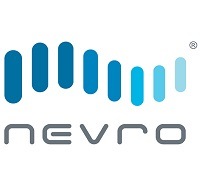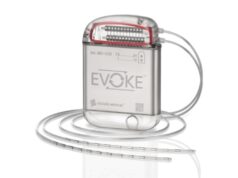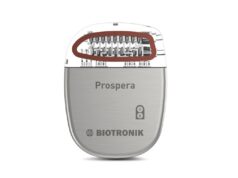 Nevro Corporation has announced the publication of new 24-month data from the SENZA-NSRBP multicentre randomised controlled trial (RCT) in the Journal of Neurosurgery: Spine. The published 24-month data detail outcomes for non-surgical refractory back pain (NSRBP) patients treated with Nevro’s high-frequency (10kHz) spinal cord stimulation (SCS) system plus conventional medical management (CMM) versus CMM alone.
Nevro Corporation has announced the publication of new 24-month data from the SENZA-NSRBP multicentre randomised controlled trial (RCT) in the Journal of Neurosurgery: Spine. The published 24-month data detail outcomes for non-surgical refractory back pain (NSRBP) patients treated with Nevro’s high-frequency (10kHz) spinal cord stimulation (SCS) system plus conventional medical management (CMM) versus CMM alone.
The data show that patients in the high-frequency SCS arm experienced “profound improvements” in pain, function, and quality of life, as well as reduced opioid use compared to the CMM arm at 24 months. According to Nevro, the long-term data provide further evidence of the benefits of high-frequency SCS in managing patients with NSRBP.
“People with NSRBP live with pain that can be both physically and emotionally debilitating, affecting their ability to manage their everyday lives,” said Leonardo Kapural (Carolinas Pain Institute and Center for Clinical Research, Winston-Salem, USA), principal investigator for the SENZA-NSRBP trial. “Patients often turn to unproven treatments—some with potentially significant harms, like opioids—when they feel they have run out of options to reduce their pain. We can see through these data that high-frequency SCS is capable of giving patients the relief, function and quality-of-life improvements that many are desperate to find.”
The 24-month data demonstrated the following benefits for the 125 patients who received 10kHz therapy within the SENZA-NSRBP RCT:
- Some 81.6% of all patients who received a permanent implant were classified as pain responders (achieved ≥50% pain relief) at 24 months, with 58.4% of patients classified as profound responders (achieved ≥80% pain relief)
- The mean back pain (as measured by the visual analogue scale [VAS]) significantly decreased from 7.4 at baseline to 1.9, representing a 5.5-point (74%) decrease from baseline
- Patients reporting a severe level of disability based on the Oswestry disability index (ODI) decreased from 73% at baseline to 26% of patients at 24 months
- Overall, 75.2% of patients were classified as ODI responders, achieving a ≥10-point improvement in ODI score, signalling improvements in their ability to perform daily living activities
- Mean EQ-5D-5L instrument index score was significantly increased from 0.57 at baseline to 0.766 at three months after implantation—a 0.19-point improvement that was maintained at six, 12, 18 and 24 months after implantation, and a score that represents ≥2.5 times the minimal clinically important improvement
- High levels of patient satisfaction were recorded at 24 months, with 76% of patients reporting their condition was “better” or “a great deal better” on patient-reported global impression of change (PGIC)
- Opioid usage was decreased or stopped in 62% of patients who were using opioids at baseline, with the mean dose decreasing from 35±39 morphine milligram equivalent (MME) at baseline to 15±35 MME at 24 months
- No new safety signals were identified during the 24-month follow-up, with most study-related adverse events occurring in the first six months after permanent implantation and no additional serious adverse events beyond the six reported at 12 months
In a press release, Nevro notes that the safety profile observed in the trial is “consistent” with types and rates of real-world adverse events reported for high-frequency SCS, as well as safety outcomes generally associated with SCS.
“When patients with chronic low back pain do not improve with conventional therapies and are not good candidates for spine surgery, it can leave both the patient and their care team feeling frustrated by the lack of options,” said study investigator Naresh Patel (Mayo Clinic Arizona, Phoenix, USA). “This research demonstrates that high-frequency SCS can address an unmet need to treat the challenging NSRBP patient population, and to see results sustained at 24 months is very encouraging.”










